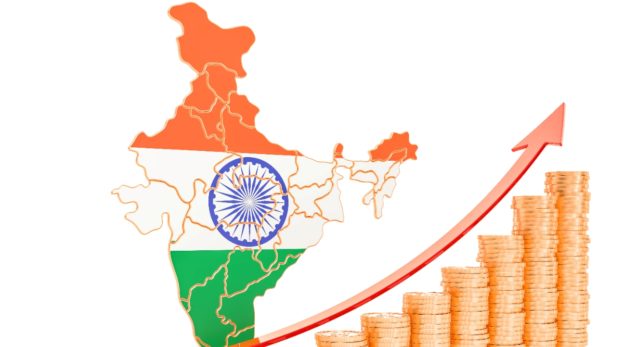A large part of the growth came from strong domestic demand even as the global economic slowdown weighed on exports. Clearly, data suggests that amidst global economic uncertainties and tightening liquidity conditions, India will have to rely on domestic demand growth; private consumption and investment spending will be key to growth sustainability.
It was an August month for India. From the successful landing of Chandraayan-3 on the moon to the first gold medal at the World Athletics Championships 2023, the month ended with a big bang note on the economy. India grew 7.8 per cent in the first quarter, which is close to RBI’s estimate of 8.1 per cent.
GDP growth which climbed to 7.8 per cent YoY in Q1 FY23-24 from 6.1 per cent in the previous quarter. A large part of the growth came from strong domestic demand even as the global economic slowdown weighed on exports. Clearly, data suggests that amidst global economic uncertainties and tightening liquidity conditions, India will have to rely on domestic demand growth; private consumption and investment spending will be key to growth sustainability.
The news of a resilient and strong domestic demand comes at an opportune time as leaders of G20 nations prepare to arrive in New Delhi to be part of the annual G20 summit. As India drives world growth, the summit will be an opportunity for India to exercise its influence on themes such as trade partnership, supply chain resilience, geopolitical uncertainties, climate change and sustainability, technology, empowerment of women and youth and inclusion, amongst many others.
Decoding growth
GDP growth was helped by a strong uptick in private consumer and investment spending. Private consumption and investment spending grew by 6 per cent and 7.8 per cent YoY respectively. Till the last quarter, private consumption had been recovering gradually. High-frequency data suggests rural demand remained resilient but modest, while urban demand has started picking up recently. Moderation of inflation in Q1 helped as well.
The strong growth in this quarter bodes well for investors, who are waiting for sustained cues in consumer demand, to invest. Strong capital investment by the government is already crowding in private investments. The completion of investment projects in CMIE’s CapEx database showed a strong jump in Q1 while the pipeline is quite strong as well.
One of the biggest drags was exports which contracted by -7.7 per cent YoY. The contraction in exports after eight quarters of double-digit growth is a concern. While the contraction was broad-based, the good news is that exports in electronics goods remained strong; its share in total exports has gone up from 3.4 per cent to 7.2 per cent in two years. The accelerated digitization around the globe and India’s determination to accelerate efforts towards self-sufficiency in the electronics space aided in the growth.
From the sector side, the manufacturing and construction sectors witnessed robust growth of 4.7 per cent YoY and 7.9 per cent YoY respectively. The pick-up in capex spending by the government, the rise in demand for new residential properties, and falling input prices (WPI and fuel prices) boosted these sectors. But the biggest boost came from the services sector which grew 10.3 per cent YoY in Q1 up from 6.9 per cent in the previous quarter. This was fueled by strong growth in the ‘financial, real estate and business services’ sector. This also corroborates the consistent rise in the export of professional services. An uptick in credit growth following the improvement of the bank balance sheets, rising deposits, and innovation in the fin-tech space played a vital role as well. The ‘trade, transport and communication’ sector also did well (9.2 per cent YoY) led by a strong recovery in tourism (as seen in strong growth in domestic passengers on flights and foreign tourist numbers).
Growth in the agriculture sector marginally slowed down to 3.5 per cent owing to spatial and temporal rains across the country. The current monsoon rainfall deficit of -9 per cent may temper growth in this sector in H1 FY23-24. A slowing agriculture output could exacerbate food inflation further, and therefore, weigh on consumer spending and investment.
India enjoys a Goldilocks moment. While Q2 may see some slowdown as inflation pressures consumer spending, the upcoming festive demand, the year-end upbeat sentiments, and the upcoming election drive will keep growth strong in the following quarters. Buoyancy in domestic demand will likely push GDP to grow over 6.5 per cent YoY this fiscal, despite a slower global demand for exports. Inflation will be a cause of worry in the coming few months due to a deficit monsoon causing food prices to move up. We expect price increases to range between 5.1 per cent – 5.5 per cent in FY 2023-24. The Reserve Bank of India (RBI) will likely keep monetary policy tight and continue with a pause in policy rate hikes next month so that tighter credit does not derail growth momentum. It may go for one more hike this year.
https://www.financialexpress.com/policy/economy-with-a-7-8-growth-in-the-first-quarter-india-is-set-to-remain-the-fastest-growing-nation-3235719/





